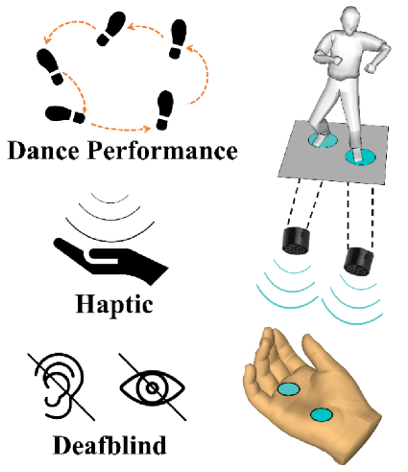Reducing the Barriers of Enjoying Dancing Performance for Deafblind People
Opinion
It was estimated that 0.2% of people around the world are living the server deafblindness [1]. For people with a combination of sight and hearing impairments, it is difficult to fully enjoy themselves in the art. Some researchers have dedicated themselves to helping deafblind people with artwork [2], but how to help people with deafblindness to “watch” the dance performance has not been studied adequately. Hereby, we offer an application proposal to the aforementioned open question and hope our idea could cause more social attention and academic interest. Figure 1 briefly illustrated the concept of the haptic application in dance performance for deafblind people. We could convert the dance performance (captured and analyzed from the human motion capture), for instance, the feet pace, to the haptic information (vibration, or ultrasound), thus the deafblind people can “feel” the dance performance from the foot space and dance rhythm. To realize the proposed object, following, but not limited to, professions and researchers are considered necessary to be involved: artist, psychologist, healthcare-givers, researchers from computer science, engineering, and robotics. Only with the cooperation from multidiscipline people, we could reduce the barriers for deafblind people and help them enjoy the art just like the rest of us. We strongly believe: the surprised face or the big smile of the deafblind people when they felt someone was just “dancing” on their palms, will make all tough research work worthy.



No comments:
Post a Comment
Note: Only a member of this blog may post a comment.